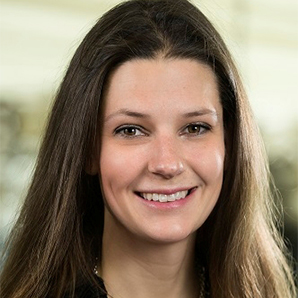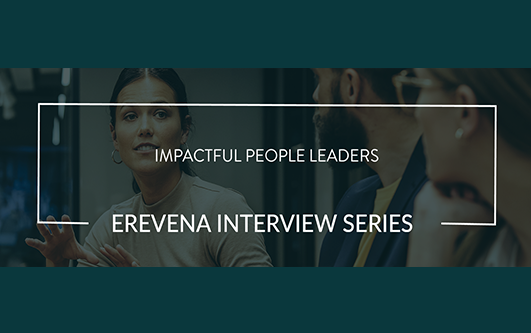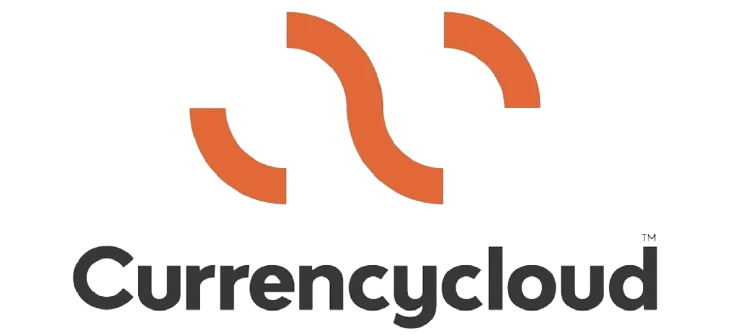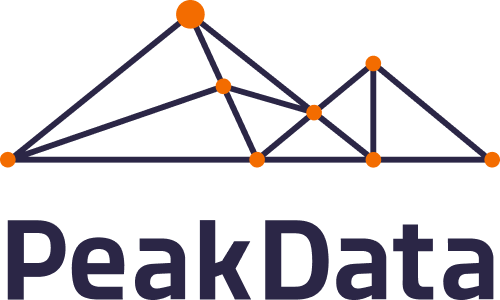Frances Brooks Taplett has been a strategy consultant, Chief People Officer, and customer success leader in HR tech. She talks to Erevena’s Chris Warner about the value of a structured, organisational approach to talent and how a data-led academic study proved the case for a return-to-work model.
How did you get started in people leadership?
Like many of today’s people leaders, I started out in management consulting after joining Boston Consulting Group. At the time I didn’t know what career path to follow, so this allowed me to spend a few years after grad school exploring different aspects of the business world. I found that I was spending an increasing amount of my time in the people space, looking at governance and organisational design. Then, a year after having my first child, I opted to move to a role involving less travel, which saw me working on BCG’s internal people team. I initially led diversity, inclusion and equity, which was simply called the Women’s Initiative back then. I worked on an interesting initiative looking at how to change the work-life balance in management consulting, which BCG was exploring at that time. This grew into me running BCG’s people team with our global people chair (the equivalent of a COO in other companies).
How did your diversity and inclusion role expand?
I had ownership of the end-to-end employee life cycle, from recruiting and onboarding, to retention, learning & development and people development. This also embraced diversity and inclusion, as well as our work-life initiatives and strategic placements for graduates. I’d been doing this for five or six years when we began getting more and questions from our clients around diversity and inclusion. This was right after the #me too movement rocked the US and led to me taking on a broader client facing remit around diversity and inclusion. I worked for BCG on this topic in Saudi Arabia, Latin America and Southeast Asia.
Did your background or early career shape your choices?
On the diversity and inclusion front, yes. My mum was a professor of comparative literature and women’s studies, so that was certainly an influence on me. Later, in the workplace, I acutely felt the impact of both good and bad managers early in my career. I’ll talk about one of the good guys in particular – he took the time to talk to me at length about how to be successful and operated very much as a team player. My success was important to him. This was not unusual at BCG and is how I’ve tried to shape who I am and how I manage teams. It also guides the type of culture and communities I try to build, with the notion of trust, succeeding together and enabling somebody to put their best foot forward. It looks obvious on paper but is harder to do in practice.
Why did you make the jump from management consulting into academia?
After working at BCG for 12 years, I felt it was time to try something different. I’d been in the people space for a decade or so and it was a natural transition to search for an organisation with a strategic, forward thinking, people-centric approach to organisational and cultural design. That’s when I joined the Broad Institute at Harvard & MIT as their Chief People Officer. It was certainly an interesting time to start a new role as it was in 2020 just as Covid hit! Just five weeks into my role, I was opening a day-care facility so that our essential workers could get tested and drop off their kids in a safe space and return to work.
What do you look for in an organization you’re considering joining?
I want to know where the Chief People Officer, head of HR, or even a more junior HR role fits into the organisation. How does the organisation view them? Will I be reporting into the CEO and tying in to how the business is run, or is the role viewed as a separate pillar? Does the organisation say it wants to build the right culture, but then puts all the cultural pieces and HR off to one side? I also try to look at the management team to see if they appear creative and innovative. I really value relationships and believe it’s important to like the people I work with. Can I see myself in the trenches alongside them? And what about the person who sat in the role before me – were they also innovative and creative, or simply checking boxes and keeping the trains on track. This latter question gives me an idea of what the company has prioritized in the past.
How has the perception of HR changed in recent years?
The events of the last three years have meant that traditional HR is not a very good informant of current HR. There was no playbook for managing through a global pandemic and the sudden, forced experiment in remote work that placed organisational culture both under the microscope and under pressure. There was also no playbook for the geopolitical and race issues in our country and how that bled into the workplace more clearly than it had in the past.
What helped me was that I operate by taking a structured organisational approach. It’s partly why my profile as a former management consultant or strategic thinker is in vogue at the moment. There is a clearer understanding of the impact of organisational culture on how to get the most out of people and that it has to be tied closely to the strategy of the organisation to be effective. It can’t be viewed as a silo – a virtuous side hustle around creating a great culture doesn’t work. So, I think the kind of structured thinking that consulting brings is really helpful in today’s HR world.
How can an organization get the most from its people team?
First, the easy answer is to listen, to thought partner and to probe. Digging deeper, there needs to be recognition that things around people take time. So, you have to have a longer-term time horizon than is usually comfortable in a quarterly-based publicly traded, or even private organisation. Second, it’s about investing in the HR function enough to give human power to the initiatives that people leaders want to put in place. And third, take a step back and ask what the organisation needs to do – and what is no longer needed. What doesn’t make sense anymore? For example, you might have huge, open workspaces but are now using the office as a hub location where people come together for meetings, so perhaps you need to shift to a beehive of co-collaboration spaces – how can HR help with this transition?
The changing workplace also has an impact on how HR thinks about hiring and ensuring balanced and inclusive candidate lists. HR needs the time to put people though the process and to invest in development to make folks successful when they come to the organisation. This is especially so if you’re looking for new kinds of profiles, such as a digital person who’s been laid off from the tech sector and is coming into an organization that has not historically employed pure digital profiles. Or they might be somebody who comes with a different educational background to what you traditionally hire. So, we need to shift the focus of how we think about the people investments we make.
What impact did you make at the Broad Institute?
To start with, we hired our first chief diversity officer under my tenure, something of which I’m very proud. We asked how we could create a workplace characterised by inclusion, diversity, equity, and allies. How could we really drive this agenda forward? I made a lot of promotions, notably in the HR team I’d inherited which was not particularly diverse when I joined.
Then we rethought and redesigned a return-to-work program that would create the flexibility people were looking for, while still enabling them to collaborate in a way that had always made the Broad Institute so special – in fact, we did this by taking a scientific approach through collaboration with a Harvard professor. We then carried out some work around people analytics, using data and insights to understand how to drive this strategy as opposed to intuition and hypothesis. I am proud of the fact that our work academically proved the theory on this and shaped how we began to bring people back to the workplace.
Can you expand on this scientific approach?
It enabled us to understand the value of spontaneous collisions and planned collisions in the office. We looked at the different roles and how much in-person collaboration was necessary versus remote interaction. The Broad Institute is interesting in this respect because some people never switched to a work-from-home model during the pandemic. They were needed on-site, for example to continue with experiments that simply couldn’t be left unattended. When we started thinking about bringing people back, we looked at the historical data pre-pandemic and it was clear that many people hadn’t previously come in five days a week, so why did they need to now?
Our collaboration with Leslie Perlow, a Harvard professor, aimed at understanding what the right amount of time was for people to be in the office. What was the most effective work to do together in person? How did that vary by role? So, it could be quite different for a wet lab scientist with big equipment versus a computational biologist coding on a laptop. We ran surveys asking how many days people had been in the office over a week. How did they feel? Were they energized by being together? What kind of tasks did they get done?
It was amazing in an organisation of scientists to be able to say not only do we hypothesise these things, but here’s the data that backs it up. And as a Chief People Officer, my role was not only to help inform the hypotheses and direction of the organisation, but to ensure that the entire leadership team was bought into that direction. It shouldn’t be a mandate from the people function, but needed to be owned by everyone and, at the Broad Institute, there is no better way than empirical scientific study. So, that was really exciting and pretty cutting edge in terms of what we were seeing people officers doing.
You then took a new direction and a customer facing role – can you tell us more?
I joined Eightfold AI first as a VP of Customer Success and then became VP Customer Experience. Its Talent Intelligence Platform is functionally aligned with what I’d been doing in the past, for example it uses AI and big data to make inferences around matching, whether that be in talent acquisition or development. This is very much in sync with my view of the role of HR and where this field needs to go. The impetus to move into a customer success function was that I felt it would allow me to take my management consulting approach of working with organisations to help them think about how to take their hiring and development forward in a much more data driven and inclusive direction. I’d also add that, having gone to Stanford, I have always been intrigued by the tech industry and this seemed like a great way to be part of that.
What key takeaways did you have from being in a customer-focused role?
One of the biggest challenges is that HR folk often don’t take a profit and loss (P&L) lens to how they think about processes and approaches. For me, being on a go-to-market team and sitting close to the revenue stream was extremely helpful. And, having previously worked at well-established organisations, I learned a lot about a start-up environment.
In my experience, HR leaders have a budget for some of the baseline traditional HR pieces, like payroll and benefits, but for large, new innovation they need to build a business case and get approval. More often for this, they focus on new benefit and spend and don’t ever look at historical, spend and benefit, which is something more akin to a go-to-market team. A leadership team is going to be much more interested in having a conversation about investing in a new approach to talent management if it also comes with the caveat that we’re going to gather this data and use it to drive who we promote and how we promote them.
How is the changing economy affecting the people function?
Some of the underlying market fundamentals are still strong, such as hiring. In other areas things seem weaker, for example we’ve seen massive layoffs in tech, which I think were necessary as tech had over-built in the pandemic. As an optimist, I can see the positives of this in that I expect to see this digital talent going into more traditional industries that really need digital innovation, which will be for the better of society.
An aspect of the talent market that I worry about in a downturn is diversity and inclusion. We know that, historically, underrepresented populations tend to be more impacted in a recession or a down market. There’s also the fact that remote work helps women and it helps black and brown Americans, whereas the traditional in-office focus tends to prioritize white, middle aged men. I worry that in a down market this in-office face time becomes a proxy for effectiveness, which will negatively impact remote workers and our overall inclusion, digital, equity, and allyship (IDEA) agenda – an acronym created by Katelynne Bazile, a brilliant woman I worked with.
More positively, I find that coming out of a down market tends to be when we see innovation. And when the market tips up we see an ambition around hiring and bringing people in. It’s usually a time when strong HR leaders with an innovative approach and a willingness to look beyond the obvious tend to do well. So, I think it’s an exciting time to take an HR role.
How can people leaders ensure digital talent from the tech industry adds value when it moves to more traditional sectors?
From experience, I’d say there’s a need to educate both the new hires in the company’s processes and the existing organization on how to evaluate these individuals and the additional skills they bring. How do you ramp up these new skills? It can be simple stuff, for example, if someone is coming from a computer science background and has spent three years in a tech startup, the words P&L may not resonate with them.
I also hope that we’re going to see some of this digital talent moving into organizations that are focused on climate change and social impact. Or even traditional organizations just taking a lens and using new talent to drive pieces of that agenda – we know that’s what consumers are looking for.
Share this article:












